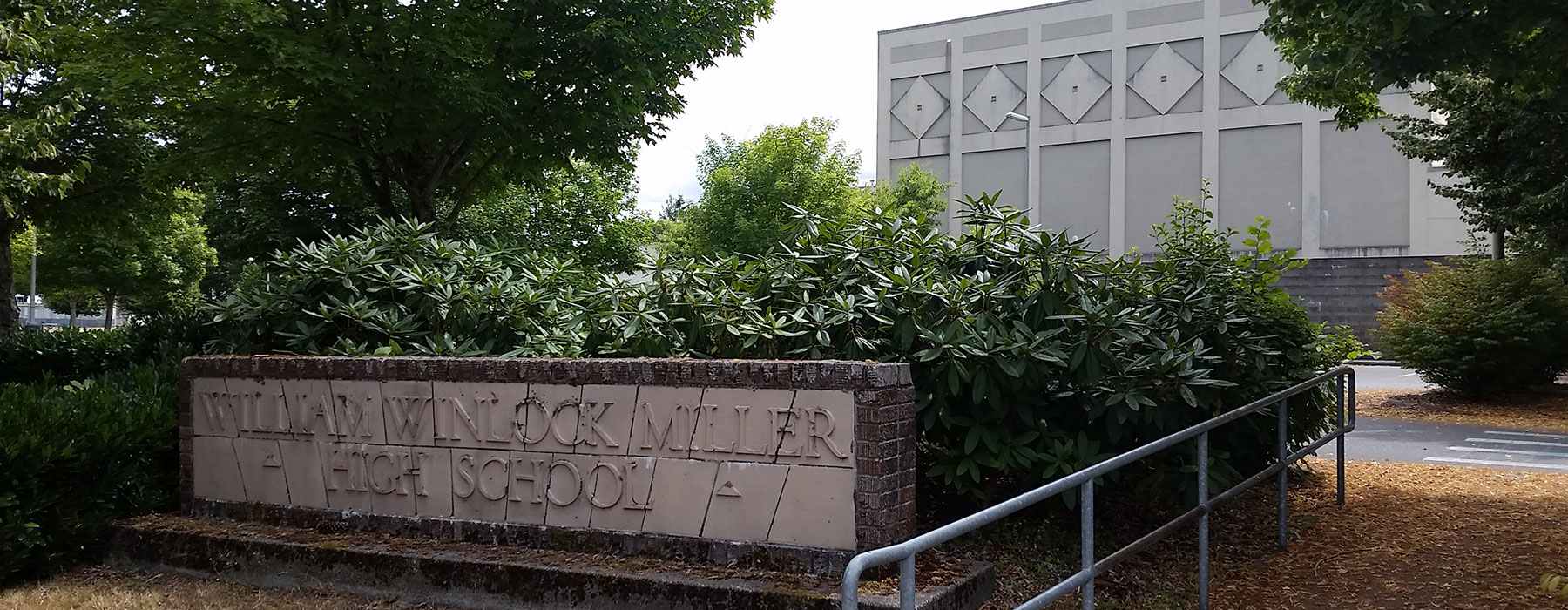
Miller Family History
The Elisabeth C. Miller Botanical Garden is the former residence of Pendleton and Elisabeth Miller. The Millers purchased five acres of land in 1948 north of Seattle, Washington for its expansive views over Puget Sound and the Olympic Mountains.
Pendleton Miller’s forebears were pioneers in the Pacific Northwest and the Miller Family legacy began with the arrival of Pendleton’s grandfather, William Winlock Miller, to the Oregon Territory in 1850.
William Miller was born in Greensburg, Kentucky in 1822, but grew up primarily in southern Illinois. He attended Illinois College and became a schoolteacher in 1845. The call of the West came four years later with a brief foray to California and back in 1849 as part of the California Gold Rush. A year later, William Miller emigrated from Illinois permanently via the Oregon Trail.
Within a year of Miller’s arrival in the Willamette Valley just south of Salem, Oregon, and through political connections back in Illinois, he was appointed Surveyor of Customs in 1851 for the newly created Port of Nisqually at the southern end of Puget Sound.
He moved to Olympia for his new position and became a friend and political ally of Isaac Ingalls Stevens, the first governor of the Territory of Washington. Along with holding several minor political offices and being mayor of Olympia (1872–1873), Miller acquired extensive property interests in the Puget Sound region as well as in San Francisco, and he increased his fortune dramatically through money lending and financing until his untimely death in 1876.
William W. Miller married Mary Margaret McFadden in 1869. She was born in 1840 in Little Washington, Pennsylvania and her family came West in 1853 when her father, O. B. McFadden, was appointed as a justice to the Territorial Supreme Court.
The Millers had two sons, Winlock William Miller born in 1870, and Pendleton Miller born in 1871, both in Olympia, Washington.
Never necessarily described as being of robust health early on in his life, William Winlock Miller’s vigor did improve after moving west. In late 1875, however, he suffered a virulent respiratory infection which afflicted him for many weeks. He rallied briefly only for another similar infection to take his life in January, 1876.
Mary Miller was encouraged by trusted advisors of her husband to follow the traditional course of widowhood with a life of leasure and travel; but instead, she assumed the responsibilities of the Miller landholdings and investments. To a certain extent, of course, this was to provide well for her sons lives and education, but she also desired independence. She formed a new corporation, Mary M. Miller & Sons, to manage the business affairs and moved to Seattle, a city on the rise in the last quarter of the 19th century.
The second child of the Millers, Pendleton Miller, died in 1904 at age 32.
10 years before Mary Miller died in 1927, she turned over the Miller company to Winlock W. Miller, her eldest. He carried on the family legacy. He also became involved in groups promoting the preservation and protection of natural areas. He joined The Mountaineers club which formed in 1906. In addition, Winlock Miller became one of the longest serving regents for the University of Washington at more than 40 years. In 1954 the former Education Hall on the UW campus was renamed Miller Hall.
Winlock Miller married Martha Keating in 1904, and they also had two sons, Winlock William Miller, born in 1907, and Pendleton Miller, born in 1910. This time the elder son, Winlock, died relatively young in 1939, age 32.
After Winlock & Martha Miller both died in 1964, their only child, Pendleton, assumed the family legacy, in addition to his career as an attorney in Seattle. He married Elisabeth Mae Carey in 1943.
In 1948, the couple found a five-acre parcel of land available in The Highlands, a community founded in 1907. They purchased the property and built a beautiful home there in 1949. They raised two sons, Winlock William Miller (1950 – 2015) and Carey Keating Miller (1954 – 2014).
In the decades that followed, Mrs. Miller’s passionate interest in horticulture broadened into an esteemed botanical garden with many rare and unusual plants.
Mr. Miller passed away in 1988 with Mrs. Miller passing in 1994. Subsequently, the Elisabeth C. Miller Botanical Garden Trust was created to serve as a resource for the Pacific Northwest horticultural community.

